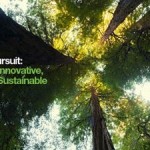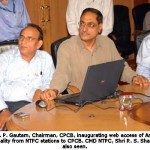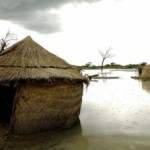 Washington, D.C. – Less than six months into 2011, the U.S. has experienced record-breaking floods and snowstorms, prolonged drought, and massive wildfires. A new white paper released today by the Pew Center on Global Climate Change seeks to explain the connection between extreme weather and climate change, while highlighting the need to address U.S. vulnerabilities to extreme events.
Washington, D.C. – Less than six months into 2011, the U.S. has experienced record-breaking floods and snowstorms, prolonged drought, and massive wildfires. A new white paper released today by the Pew Center on Global Climate Change seeks to explain the connection between extreme weather and climate change, while highlighting the need to address U.S. vulnerabilities to extreme events.
The paper, “Extreme Weather and Climate Change: Understanding the Link and Managing the Risk”, was released in coordination with a three-part series in ‘Scientific American’ published Tuesday, June 28 through Thursday, June 30.
“The extreme weather that the U.S. has experienced in 2011 should cause all Americans, and especially our elected leaders, to think long and hard about the risks posed by climate change, and about what we can do to minimize those risks,” said Eileen Claussen, President of the Pew Center on Global Climate Change. “We need to move past asking whether extreme weather is caused by climate change and start figuring out how to protect ourselves in a future when these events become both more severe and more common.”
A primer on extreme weather, the paper explains that the recent surplus of extreme weather events is part of a longer trend of rising extremes that reveals a pattern of increasing risk as the planet warms. Instead of focusing on whether individual weather events are caused by climate change, the paper asserts that the events of 2011 provide evidence that we are loading the dice for more instances of extreme weather in the future, and that these events will happen with increasing frequency in the years and decades to come.
The most important lessons to be drawn from recent individual weather events are related to society’s social and economic vulnerabilities to climate change. Planners and policymakers should use these lessons to inform action to reduce the impacts of climate change. Both adapting to unavoidable climate change and mitigating future greenhouse gas emissions are required to manage the risks of extreme weather in a warmer climate, the Pew Center paper asserts.
The new white paper is part of a larger effort by the Pew Center to educate people about the risks associated with more frequent extreme weather. A second white paper released today by the Pew Center, “A Climate of Extreme Weather Events: U.S. Risks and Vulnerabilities”, provides an overview of the past 15 years of extreme weather. The paper features an interactive map of extreme weather events that users can filter by event type to see how the global climate is changing.
The Pew Center funded the reporting for the Scientific American series. Scientific American and award-winning science journalist John Carey had complete editorial control.
Source: Pew Center on Global Climate Change.
Related Features:












